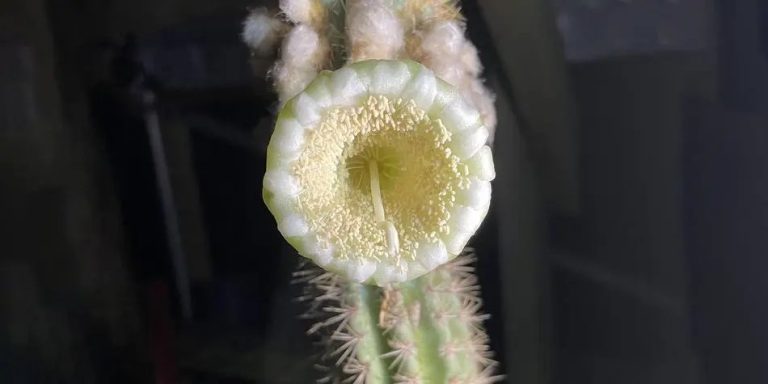Originally published in Climaterealism

A recent article in USA Today A rare cactus species in the Florida Keys is claimed to be extinct due to rising sea levels. This is wrong. Many factors have contributed to the decline of this cactus, most of which began more than 100 years ago. USA Today Many other news outlets fail to report all the facts, misleading readers into believing that climate change is to blame.
July 10, USA Today The article, titled “A disturbing first: Rising sea levels are killing Florida's rare cacti,” reads:
A rare tree cactus has grown for decades, hidden among the mangroves of Key Largo, Florida, but it's losing its battle with rising sea levels and other pressures.
It is now thought to be locally extinct in the United States, a team of researchers reports in a study published this week. The study's authors said the cactus' extinction is believed to be the country's first localized extinction caused by rising sea levels.
Before getting into the science, let’s examine it from a common sense perspective. Photos used in USA Today The story shows an “extinct” cactus in a standard plant nursery plastic pot (made by a conservationist). Not only are they not extinct, they can be cultivated and replanted.

oops!
Maybe these “journalists” don't know the definition of “extinction”. national geographic There is a useful and simple definition:

If a “rare cactus” were planted in a nursery pot, the “rare cactus” would become extinct. Maybe the cactus should be renamed Fake Maximus to honor the claim.
Now, let’s look at another suggestion – that rising sea levels are the cause of pseudo-extinction. The Florida Museum has this to say:
Key Largo Tree Cactus (Maomao wax) still grows on a few scattered islands in the Caribbean, including northern Cuba and parts of the Bahamas. In the United States, it is restricted to a single population in the Florida Keys, where it was first discovered in 1992 and has been monitored intermittently since.
Saltwater intrusion from rising sea levels, soil depletion from hurricanes and high tides, and mammalian herbivory are placing enormous pressure on humans. By 2021, the originally lush stand of about 150 stems was reduced to six diseased fragments, which researchers recycled for ex-situ planting to ensure their survival.
Note that they correctly attributed the loss of the islands to many factors, but also noted that cacti grew elsewhere. The study’s press release is more telling:
Fairchild researchers began working with local land managers in 2007 to monitor all tree-cactus populations annually. A Fairchild Semiconductor-led study shows that in the years following a storm surge event in the Lower Keys, the soil beneath dead cacti had higher salt content than live cacti, suggesting a clear link between mortality and increased salinity.
…
Key Largo tree cactus grows on low limestone outcrops surrounded by mangroves near the coast. The site originally had a unique layer of soil and organic matter that allowed cacti and other plants to grow, but storm surges and unusually high tides from hurricanes eroded that material until little was left.
They go on to describe how hurricanes poison the soil where cacti grow, “In 2017, Category 5 Hurricane Irma devastated South Florida, causing a 5-foot storm surge. Key Largo’s highest point is only 15 feet above sea level. ft., and much of the island remained flooded for the next several days.
But the most devastating fact they reveal is that this “extinction” began long ago, before sea levels became an issue:
Botanist John Small wrote in 1917 that the key tree cactus was “extremely abundant for a long time.” [on Key West]… In recent years, with the destruction of hammocks used to obtain firewood and develop construction sites, this interesting cactus has become scarce until it is currently on the verge of extinction in its natural habitat.
That's right, cacti were “on the verge of extinction” as early as 1917, long before climate change became an issue. famous career For the media.
Worse, the study itself is riddled with lies of omission. Nowhere in the study was it hyped USA Today and other media outlets mention or cite this important research, Moore and Martin. 1993. If researchers had bothered to look at this 1993 study, which examined Key West sea level records going back to 1846, they might have noticed this paragraph (author's emphasis):

Perhaps researchers initially considered this and then discarded it as a reference because it completely flips the entire premise of Key West sinking due to rising sea levels on its head. Apparently the cactus' disappearance has nothing to do with rising sea levels, but it has been documented as a result of passing hurricanes causing saltwater to poison the soil in which the cactus grows, as well as habitat destruction discovered as early as 1917.
This seems to be just another case of the media ignoring research that undermines the climate change disaster narrative they want to promote. The researchers who made this claim also appear to have overlooked some inconvenient data.
If the media did its job, it would find the same thing we did here climate realism Did. Sadly, the mainstream media seems apparently unable or unwilling to conduct even a modicum of research through fact-checking before issuing shocking but false climate change claims.

Anthony Watts
Anthony Watts is a senior fellow in environment and climate at the Heartland Institute. Since 1978, Watts has been in the weather business both in front of and behind the camera as a live television meteorologist and currently oversees daily broadcast forecasts. He created television weather graphics presentation systems, professional weather instruments, and co-authored peer-reviewed papers on climate issues. He runs the world's most viewed climate website, the award-winning wattsupwiththat.com.
related
